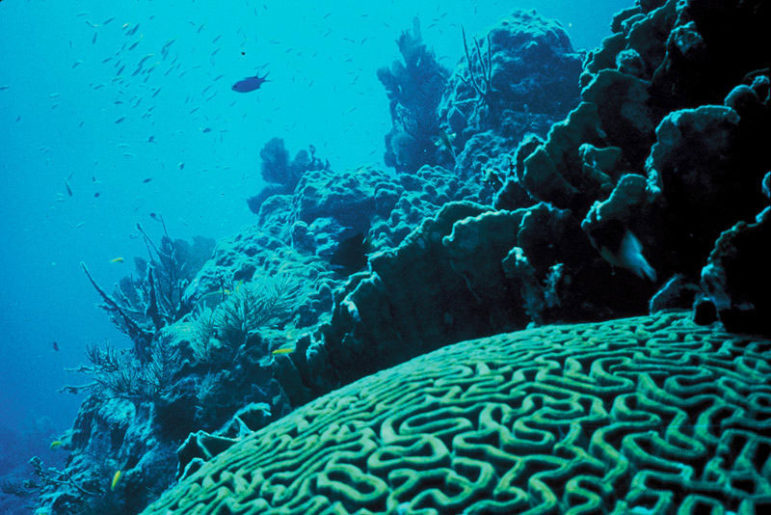
November 2016, The Boston Globe
Hundreds of millions of people depend on coral reefs for “jobs, livelihoods, food, shelter, and protection for coastal communities and the shorelines along which they live.” Implementation of the Paris Agreement would help to preserve these shallow, warm-water ecosystems from the devastating effects of increasing levels of carbon dioxide in the atmosphere. The two primary environmental stresses that place these people at risk are elevated sea surface temperature (that can cause coral bleaching and related mortality), and ocean acidification.
The Boston Globe reports on the research published Wednesday in the scientific journal PLOS that explains the science behind this global threat.
“It means jobs for lots of people,” said Linwood Pendleton, the study’s lead author and an international chair at the European Institute of Marine Studies.
In addition, many countries depend on coral reefs as a key barrier to guard against incoming storms and mitigate the damage done by surging seas. Without healthy reefs, “you lose what is essentially a moving, undersea sea wall,” said Pendleton, who estimated that about 62 million people live less than 33 feet above sea level and less than two miles from a coral reef. “The waves just come into shore full force. That can cause loss of life. It can cause loss of property.”
The report indicates that some the world’s largest emitters of carbon are also the countries most dependent on coral reefs. These countries should be the most vocal advocates and diligent implementers of the Paris Agreement.
Sign up for our free newsletters
Subscribe to NPQ's newsletters to have our top stories delivered directly to your inbox.
By signing up, you agree to our privacy policy and terms of use, and to receive messages from NPQ and our partners.
The science is not complete and many factors inhibit further and consistent study. This is especially difficult to accomplish in coastal areas where there is discord over maritime jurisdictions.
NPQ wrote in a nonprofit newswire back in October 2015 about the historic coral bleaching that began to occur in the Great Barrier Reef, the world’s largest coral reef system. By April 2016, Australian scientists at the ARC Centre of Excellence for Coral Reef Studies at James Cook University in Queensland reported that 93 percent of the Great Barrier Reef experienced coral bleaching.
The Florida Reef, the third largest coral barrier reef system in the world, is dissolving from ocean acidification. This devastation is seen around the world.
After a recent dive in Guam’s Tumon Bay, coral ecologist Laurie Raymundo took to Facebook to describe her shock at the devastation.
“I consider myself to be fairly objective and logical about science,” wrote Raymundo, of the University of Guam. “But sometimes that approach fails me. Today, for the first time in the 50 years I’ve been in the water, I cried for an hour, right into my mask, as I witnessed the extent to which our lovely Tumon Bay corals were bleaching and dying.”
—James Schaffer












